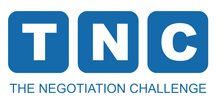A negotiation strategy is a well-thought-out plan or approach designed to achieve specific objectives and guide the negotiation process effectively. It involves setting clear goals, identifying tactics and techniques, and anticipating potential challenges to increase the likelihood of reaching favorable outcomes.
Key components of a negotiation strategy include:
- Defining Objectives: Clearly stating the desired outcomes and objectives of the negotiation. These objectives should be specific, measurable, achievable, relevant, and time-bound (SMART).
- Identifying Interests and Priorities: Understanding the underlying interests, needs, and priorities of both parties to uncover areas of mutual benefit and potential trade-offs.
- Analyzing the Other Party: Gathering information about the other party’s goals, preferences, and negotiation style. This analysis helps tailor the strategy to accommodate their interests and anticipate their tactics.
- Setting Limits and BATNA: Determining the boundaries within which you are willing to negotiate and identifying your Best Alternative to a Negotiated Agreement (BATNA) as a benchmark for assessing potential agreements.
- Choosing the Negotiation Style: Selecting the appropriate negotiation style (competitive, collaborative, accommodating, etc.) based on the nature of the negotiation, relationship dynamics, and the desired outcome.
- Creating Value: Developing strategies to create value and expand the available options for both parties through collaborative problem-solving and innovative solutions.
- Building Rapport and Trust: Planning ways to establish rapport and trust with the other party, as a positive relationship can facilitate smoother negotiations.
- Concession Management: Devising a plan for making concessions strategically and determining when to ask for concessions from the other party.
- Contingency Plans: Anticipating potential roadblocks or challenges that may arise during the negotiation and developing contingency plans to address them.
- Communication Approach: Establishing a clear communication strategy, including what information to share, how to present arguments, and how to respond to the other party’s communication.
- Timing and Sequencing: Deciding the timing and sequencing of proposals, counteroffers, and other negotiation moves for maximum impact.
- Ethical Considerations: Ensuring that the negotiation strategy aligns with ethical standards and principles, avoiding manipulative or deceptive tactics.
- Flexibility: Remaining flexible and adaptable to adjust the strategy based on changing circumstances and new information during the negotiation.
A well-designed negotiation strategy empowers negotiators to approach the negotiation with clarity, confidence, and a structured plan. It helps negotiators navigate complexities, manage emotions, and work toward achieving their goals effectively while also addressing the other party’s interests to create a win-win outcome whenever possible.
